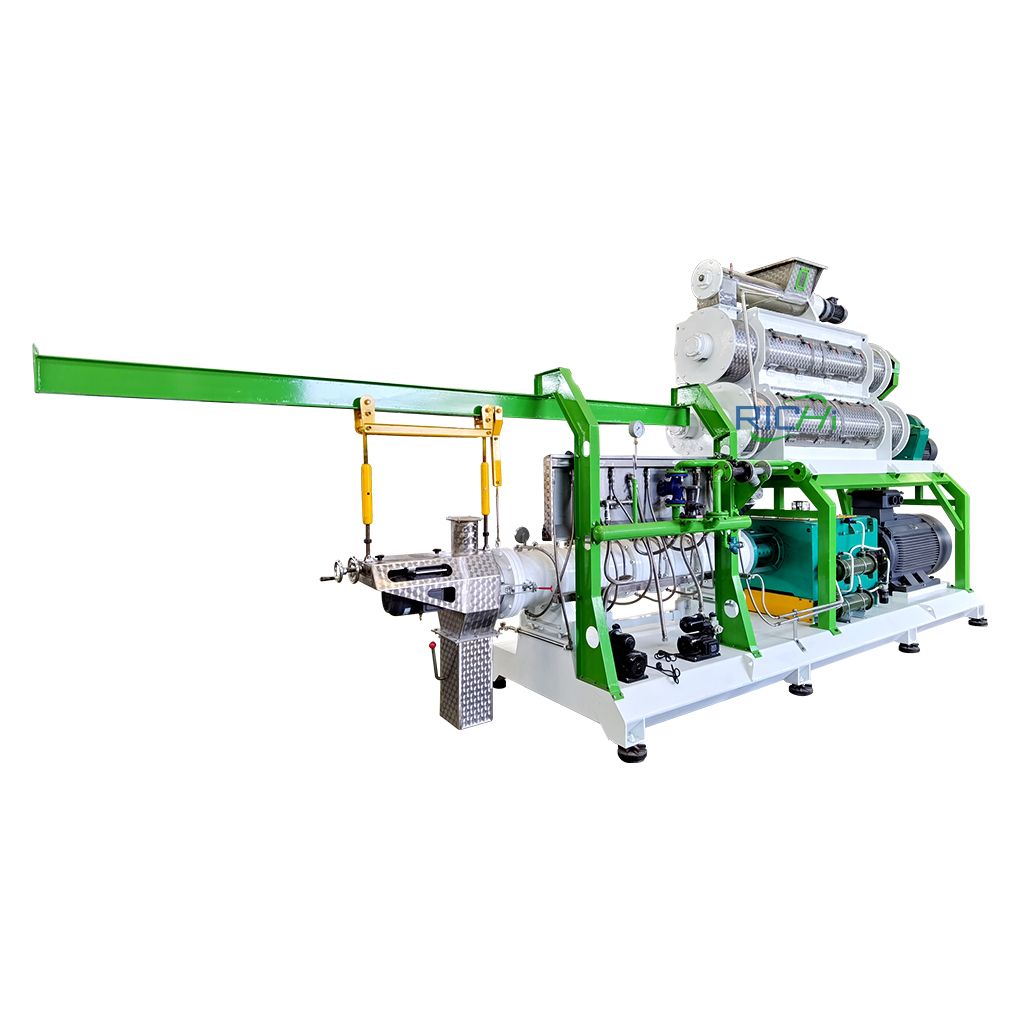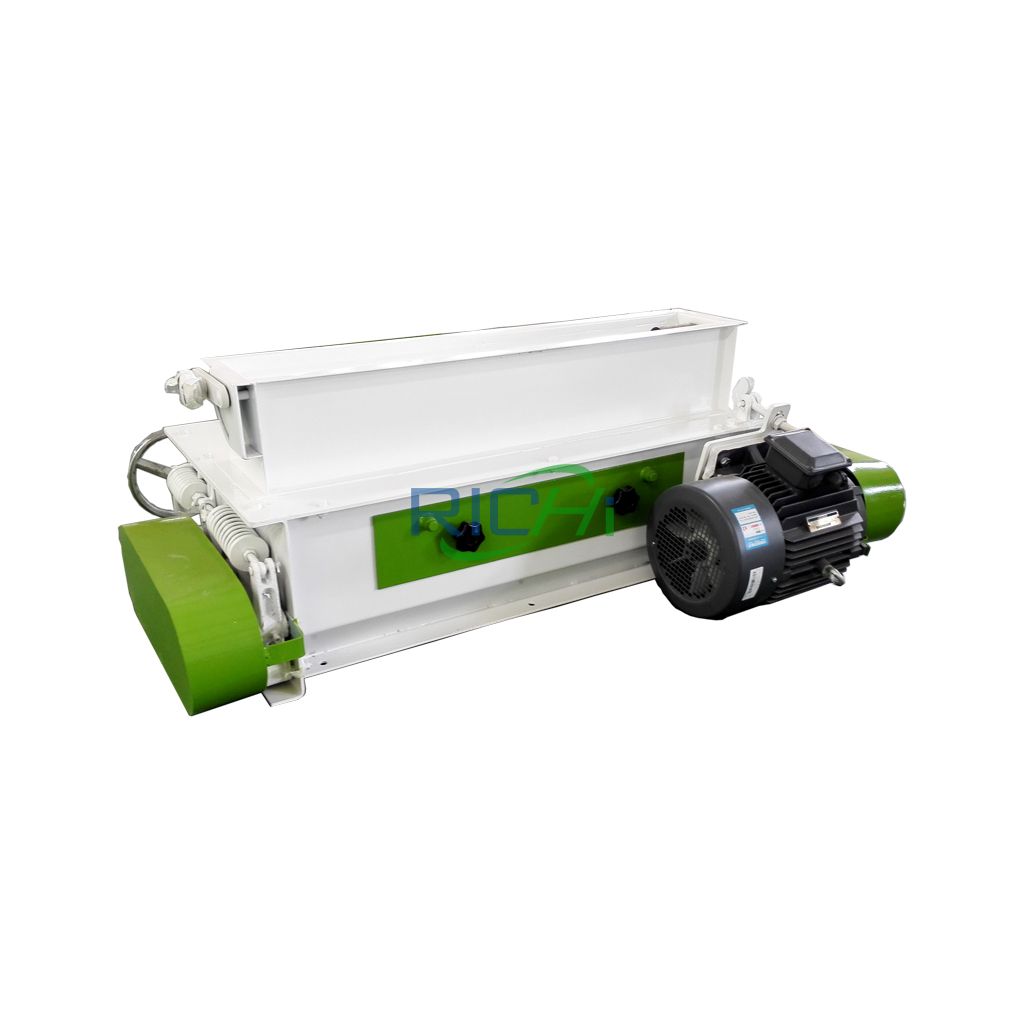
Animal Feed Mill Plant
As a professional animal feed mill plant manufacturer, no matter what your raw materials are (grain, grass or other), no matter how many kinds of feed you want to process, no matter what form of feed you want to process, no matter what your feed formula and process are, we can provide you with customized animal feed mill solutions and high efficient feed equipment.
- Capacity: 1-160 T/H
- Cost: 10,000-5,000,000 USD

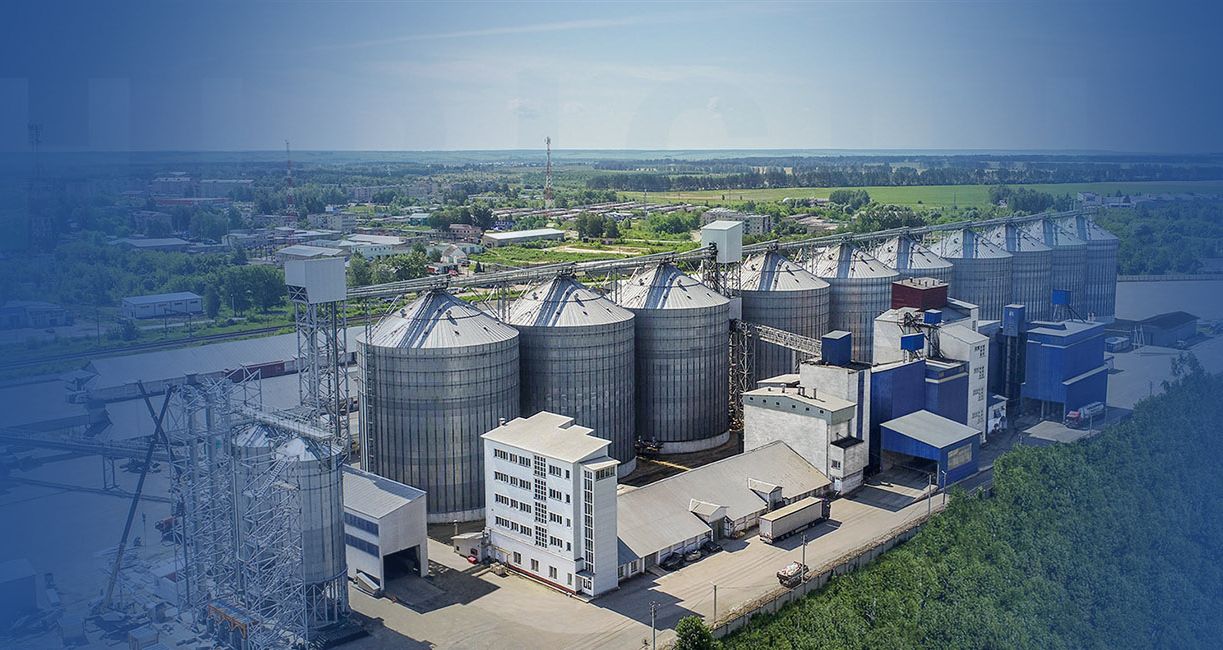
Start An animal feed mill plant
The animal feed mill system is a complete animal feed manufacturing system for processing all kinds of livestock and poultry feeds and feeds in various forms (pellet, powder, mash). It can use any feed raw materials and formulas.
The construction of an animal feed mill plant is highly specialized and involves a wide range of aspects. It integrates planning and design, equipment and technology, animal nutrition, warehousing and logistics, construction engineering, automatic control, comprehensive facilities, and factory operation management.
RICHI Machinery can provide a complete set of 1-160t/h animal feed mill process design and general plan design.
At the same time, it fully understands customer needs and intentions, masters the function and operation mode of the feed factory after it is built, and proposes system solutions.
Whether it is a new construction, reconstruction or expansion of an animal food processing plant, the purpose of building an animal feed plant is to operate efficiently and economically in the future, not just to build a feed mill plant.
Whether it can save investment, speed up construction, ensure the quality of construction and installation and whether it can obtain maximum economic and social benefits after completion, these are all things that RICHI Machinery must consider.
As a professional animal feed mill equipment manufacturer, we will not only sell feed equipment for the purpose, nor design to complete the design task, but to let each feed equipment create value for customers, and the built animal feed mill plant is fully functional and runs smoothly , production and management costs are at a low level.
Types of Animal Feed Mill Plant
—— Richi Machinery ——
According to the types of animals, the types of animal feed plants include: poultry feed mill plant, cattle feed mill plant, fish feed mill plant, livestock feed mill plant, chicken feed mill plant, goat feed mill plant, feed mill plant for pig, etc.
According to the properties of the feed, the types of feed mills are divided into:
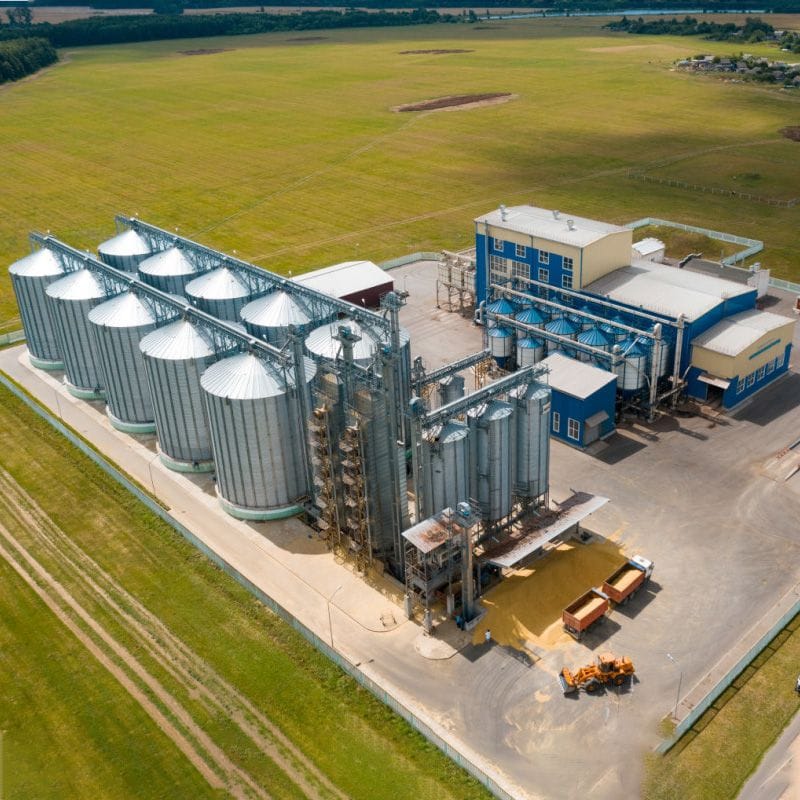
We are well aware that every customer hopes to obtain the maximum operating return with the least cost of the animal feed plant.
Only by systematically thinking about the construction of the entire animal feed processing plant from the perspective of the customer, can we design an animal feed factory that meets the real needs of customers, and achieve construction and a win-win goal for the contractor.
Animal Feed mill Plant Cost
RICHI has been focusing on the field of animal feed mill plant for nearly 30 years. With a deep understanding of the animal feed manufacturing process and long-term accumulation of animal feed mill machine technology solutions, RICHI can provide you with professional animal feed manufacturing technology, solutions and a complete set of animal feed mill equipment.

1-2T/H
- Animal feed plant cost: 10,000-50,000 USD
- Estimated installation period: 7-15 Days
- Total project power: 47-75KW
- Land use suggestion: 300-500m²

3-4T/H
- Animal feed plant cost: 5,0000-12,0000USD
- Estimated installation period: 15-20Days
- Total project power: 53-165KW
- Land use suggestion: 300-700m²

8-10T/H
- Animal feed plant cost: 150,000-300,000 USD
- Total project power: 125-410KW
- Land use suggestion: 800-2000m²
- Estimated installation period: 45-60 Days

12-20T/H
- Animal feed mill cost: 250,000-580,000USD
- Total project power: 358-620KW
- Land use suggestion: 1500-3000m²
- Estimated installation period: 60-90 Days
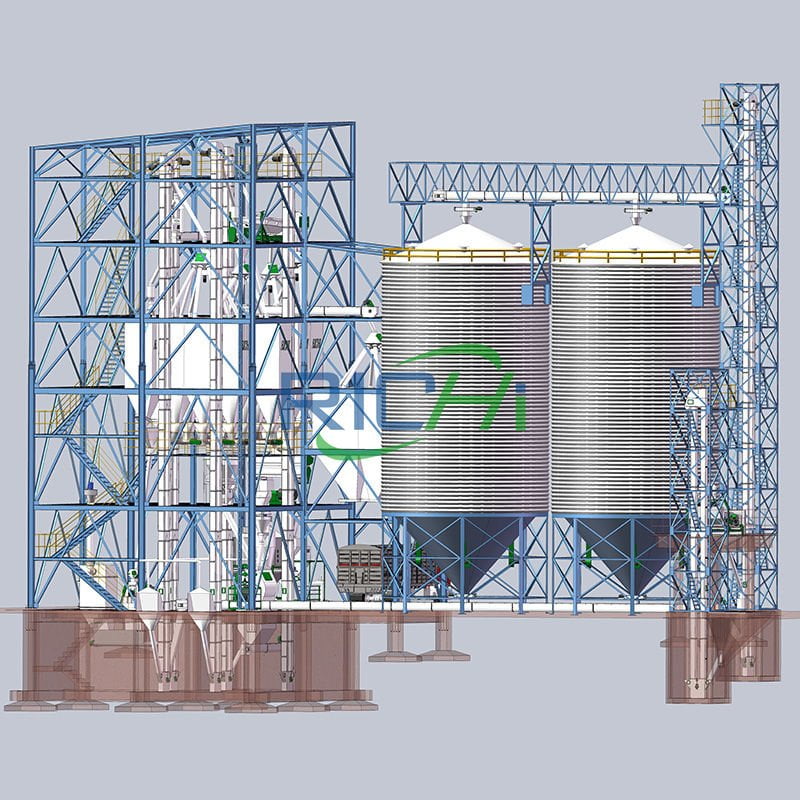
50-60T/H
- Animal feed plant cost: 900,000-1,400,000 USD
- Total project power: 710-1120KW
- Land use suggestion: 3000-5000m²
- Estimated installation period: 100-140 Days
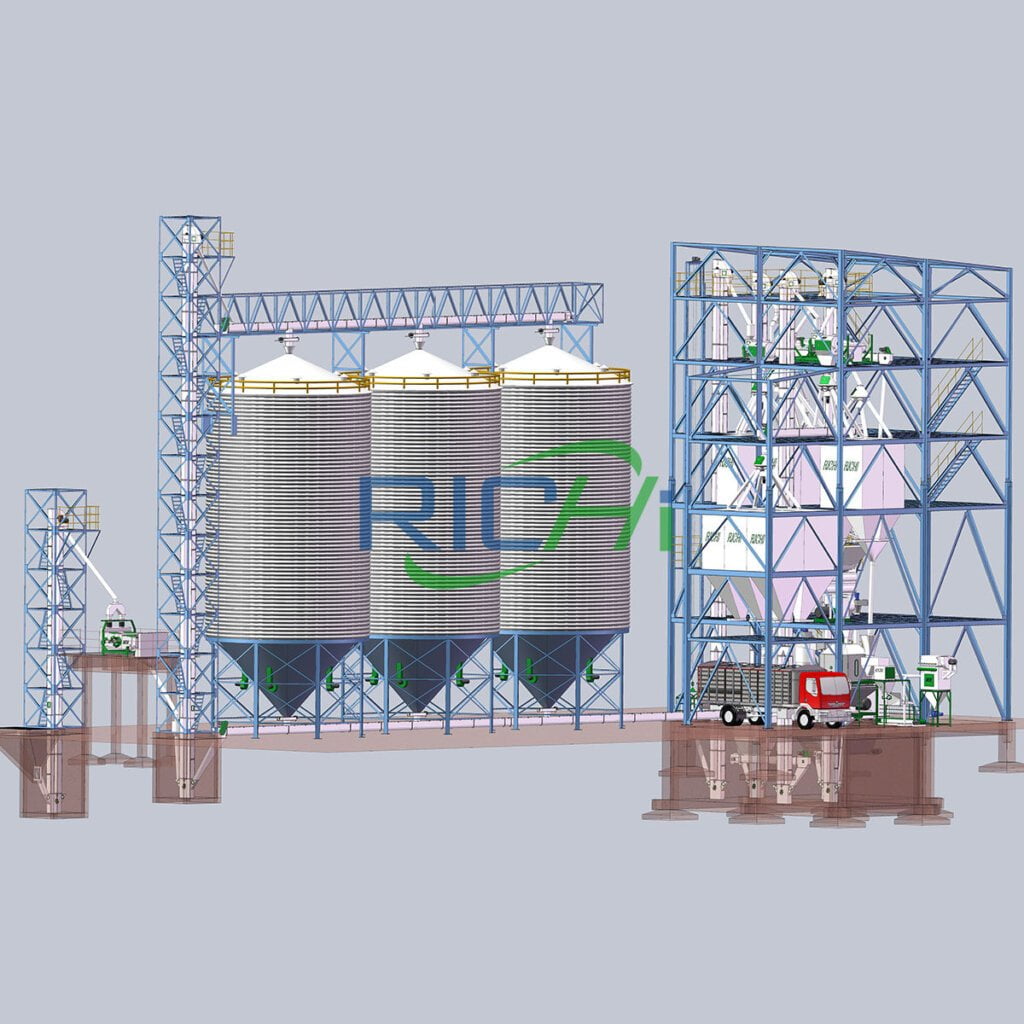
60-80T/H
- Animal feed plant cost: 1,450,000-1,800,000 USD
- Total project power: 815-1370KW
- Land use suggestion: 5000-8000m²
- Estimated installation period: 130-160 Days
Factors restricting the animal feed plant cost
- The size of the animal feed making plant production scale. If the production scale of animal feed processing plant is expanded, the number of animal feed mill equipment or animal feed production lines needs to be increased, and the total animal livestock poultry feed mill plant investment price will basically increase proportionally.
- Animal feed plant machinery model selection. According to different raw materials, formulas and feed types, the selection of equipment varies greatly. The price of animal feed plant equipment in developed countries is generally 2-3 times more expensive than ours, and the operating power consumption cost and maintenance cost are higher.
- Animal feed processing technology. The more complex the animal feed manufacturing process, the more feed making equipment is required, and the animal feed plant cost is relatively high. The higher the degree of automation in the animal feed mill plant, the higher the feed plant cost.
Factors that affect feed mill plant profit
- Prices of different quality animal feed plant machinery in different regions.
- The operating cost of the animal feed mill machine consists of workers’ wages, water and electricity costs, and wearing parts costs.
- The management of feed manufacturers, conscientious management personnel and skilled operators are the key to profit improvement.

Tips: Properly increasing the investment in good quality animal feed mill plant equipment can prolong the service life of all accessories, reduce maintenance costs, and greatly increase production, which means that costs can be recovered in a short period of time, effectively increasing profit margins and returns.
If you want to know poultry feed manufacturing plant cost. cattle feed manufacturing plant cost, etc., contact RICHI for details!
Animal feed mill plant design
—— RICHI MACHINERY ——
In the design of complete sets of animal feed making plant, animal feed manufacturing technology and animal feed mill machine are important conditions to ensure the quality of feed. Only with reliable animal feed mill equipment and scientific animal feed manufacturing process flow can high-quality compound feed be produced.
Adopting a perfect, reasonable and flexible process and selecting advanced, efficient and high-quality equipment are always the goals pursued by the design of the animal feed mill factory. Feed processes vary across the globe and are mainly divided into two categories: grinding and then batching (Americas) and batching and then grinding (Europe).
Here we only take the process of first crushing and then batching as an example. The overall animal feed manufacturing process includes eight parts: raw material receiving, pellet crushing, ingredient mixing, granulation and puffing, liquid spraying, finished product discharge, electrical control and dust removal system. I believe that after reading the following details, you will have a deep understanding of “how feed mills work”.

01 Raw material receiving and cleaning System
The receiving of raw materials is the first animal feed mill plant process to ensure the quality of feed products. The setting of receiving equipment and process should ensure the safe storage of raw materials, and the cleaning equipment of raw materials should be reasonably combined in the receiving process.
The raw material receiving process generally includes conveying equipment, magnetic separation equipment, primary cleaning screen, metering equipment and vertical silos.
Impurities mixed in feed raw materials, if not cleaned in advance, will affect product quality, even affect animal growth, damage animal feed mill machine during processing, and affect production.
Generally, the cleaning of raw materials such as animal-derived feed, minerals, and trace elements is mainly completed in the raw material processing plant. Grain raw materials and their processing by-products should be cleaned of ropes, cloth sheets, plastic films, sand and gravel, metals and other sundries. The usual method of cleaning raw materials is: first screening, then magnetic separation, and supplemented by suction and dust removal facilities.
02 Crushing System
Crushing can improve the digestibility of nutrients, and the size of feed crushing particle size directly affects the digestion and absorption of animals, crushing cost, subsequent animal feed manufacturing technology and product quality. Controlling the crushing particle size of materials is a key link in animal feed production.
Different animal species, rearing stages, raw material composition, conditioning and maturation and forming methods have different requirements for feed crushing particle size. The crushing particle size should not only meet the needs of animals, but also make the granulation effect, power consumption and pulverization rate more reasonable.
03 Mixing ingredients
Ingredients are the core part of the animal feed mill plant technology, and the correct implementation of the formula is guaranteed by the ingredient process. And mixing is an important link to ensure feed quality and improve feed remuneration. The system generally includes batching bins, various batching scales, hand feeding ports, mixers and subsequent conveying equipment, and its core is batching scales (including feeders) and mixers.
The mixing of raw materials is to mix the crushed bulk raw materials, liquid feed soybean oil, molasses, etc. and feed additive premix according to the proportion of the feed formula.


04 Granulation or Extrusion System
The pelletizing and extruding system is the system with the largest investment in the animal feed mill plant. It is mainly composed of feeder, conditioner, feed extruder, animal feed pelletizer, cooler, crusher, grading screen and conveying equipment. The external and internal quality of the finished feed depends mainly on the condition of the pelletizing & extruding system.
If you want to process powdered feed, then after the ingredient mixing system, you can go directly to the animal feed packaging section. In addition, the extruding system is not only used for processing aquatic feed and pet feed, but more and more animal feed plants have begun to extrude feed, which has been used on a large scale in some developed countries. No matter what your needs are, we can customize the corresponding process flow for you and provide high-quality animal feed pelleting machineor twin-screw extruder.
In order to control the conditioning quality of the feed, in order to control the maturity, density, pulverization rate, cooling temperature and moisture of the extruded pellet feed, a reasonable steam supply and control system and conditioning, extrusion, expansion, drying, cooling and screening equipment, and scientifically adjust the control parameters according to the different requirements of the product to obtain products that are satisfied by customers.
05 Cooling & screening system
The heat-processed feed is generally moist and high in temperature, and must be cooled in order to facilitate storage. Counter-flow coolers are replacing traditional vertical and horizontal coolers with their low cost and excellent cooling effect.
Counter-flow coolers are not only suitable for pellet feed, but also for flake extruded materials. In addition, in order to improve the granulation efficiency and reduce energy consumption, people often use large die holes to granulate and then crush the large particles through a pellet crumbler.
After the granules are crushed, they should enter the grading screen for classification, the large pellets will be returned to the animal feed crusher to be crushed again, and the fine powder will enter the animal feed pellet making machine for secondary granulation. Commonly used grading screens are plane rotary and vibrating, but the latter is used more.
06 Finished product discharge
There are two forms of finished product discharge: packaged and bulk. Due to the relatively developed transportation in some countries, a large number of feed bulk trucks are used. For most countries and territories, the bulk of commercial feed is still packaged.
Packaging is divided into manual and automatic. Most small and medium-sized animal feed mill plants use manual packaging. When choosing an automatic packaging system, attention should be paid to the accuracy and stability of the packaging scale and the working reliability of the automatic sewing machine.


07 Electrical control System
The electrical control system is the concentrated expression of the automation degree of the feed mill plant. Due to the difference in production scale, labor cost and investment capacity, the degree of automation of each animal cattle poultry chicken livestock feed mill plant shows a great difference.
At RICHI, you can choose the degree of automation you want according to your actual needs.
08 Dust removal system
Animal feed mill plants are prone to generate a large amount of dust in the animal feed manufacturing process. In order to control dust pollution, ensure the health of operators, and maintain the normal operation of animal feed mill equipment, it is essential to set up a reasonable dust removal system.
The dust removal system mostly adopts the combination of single-point suction dust removal and centralized air network dust removal. As for the specific dust removal method, it depends on the specific situation.

In the process design of the animal poultry stock feed mill plant, Richi Machinery will consider the performance of a single machine, and will also consider the overall matching, economy and practicability of the equipment. So that in actual production, you can produce high-quality products at a lower cost to meet the needs of the market.
How To Choose animal feed plant machinery?
Under the background of the continuous and stable development of the feed industry, the feed equipment and production process have been developed rapidly.
Generally, the process flow of an animal feed mill plant consists of raw material receiving, crushing, batching, mixing, granulation, cooling and screening, and finished product packaging; the core production equipment is hammer mill feed grinder, feed mixer machine, animal feed pellet mill, etc.

animal feed Pellet making Machine
Capacity:
1-48T/H
Main Power:
22-315KW
Equipment selection plays a vital role in feed production and ensuring feed quality. The following will introduce the role and selection of these types of animal feed plant machinery in production.

How to choose an Animal feed Grinder Machine?
The power equipment of the pulverizer generally accounts for about 1/3 of the total power equipment of the animal feed mill plant.
How to reasonably select the advanced pulverizing equipment, design the best process route, and use the electric feed mill grinder correctly is very important for the feed production enterprise. The SFSP series of electric feed grinders are generally used for livestock and poultry feeds.
They are widely used because of their high efficiency, good crushing performance and wide adaptability. They can crush feed raw materials to 40-60 mesh, and are suitable for various pig feeds, chicken feeds, the production of cattle and sheep feed, this model has the following characteristics:
- Adopt large diameter and low speed structure, low noise and vibration reduction;
- The feeding guide mechanism is set up, which can make the raw materials enter the pulverizer from the left or the right, and the rotor can be switched between positive and negative to ensure that the tangential feeding of the material is compatible with the turning of the rotor, and there is an emergency stop function;
- The screen is directly inserted and then pressed by the operating door, which makes it easy to load and unload;
- The wear-resistant hammer using tungsten carbide surfacing welding can increase the life of the ordinary hammer by 7~8 times;
- The additional safety device can make the pulverizer unable to start after the operation door is opened to ensure safety.
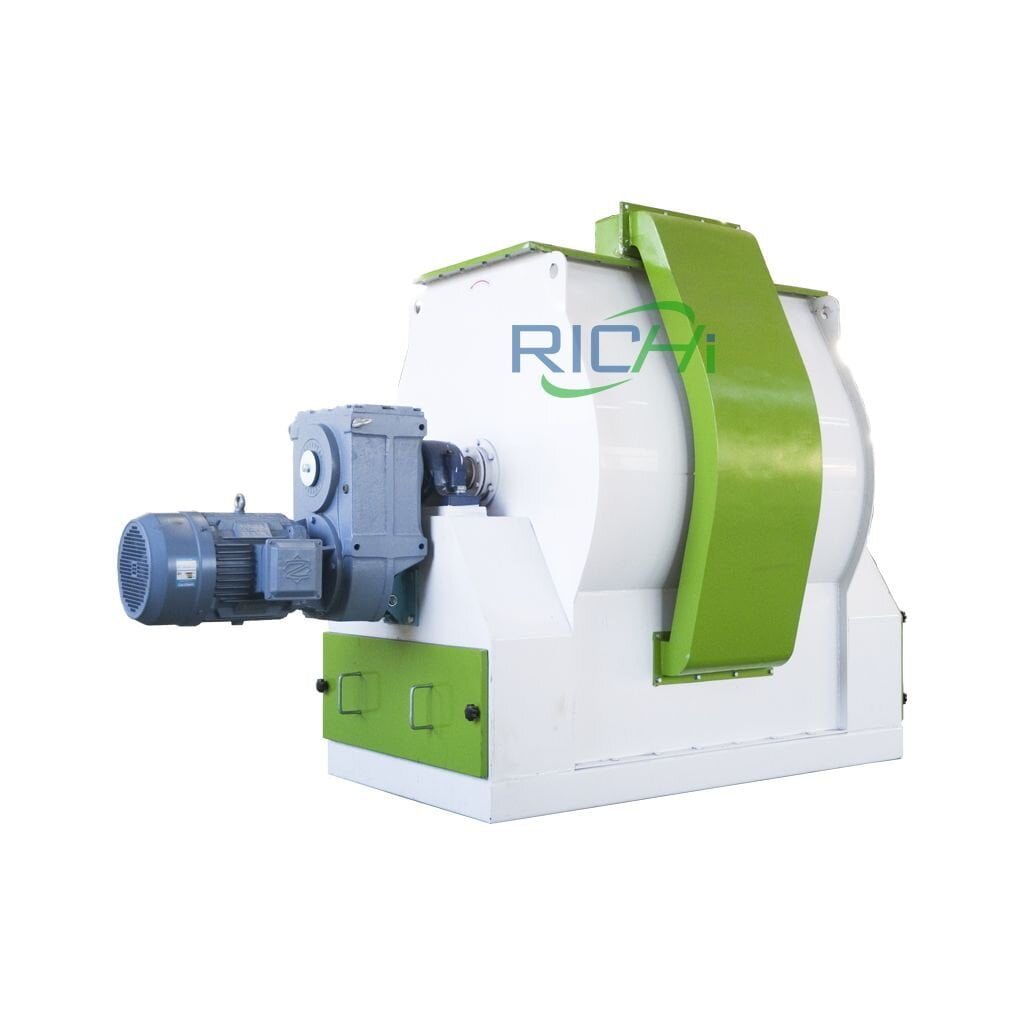
How to choose a feed mixing machine?
The main technical indicators of the feed mixer are: mixing amount per batch, mixing uniformity, mixing speed and residual rate of materials in the machine.
- Higher requirements for mixing uniformity: it is stipulated in the feed standard that the mixing uniformity variation coefficient of compound feed is ≤10%, and the mixing uniformity variation coefficient of premixed feed is ≤5%;
- The mixing time should be short: the mixing time determines the mixing cycle, and the length of the mixing time can affect the productivity of the animal feed production plant;
- The residual rate in the machine should be low: in order to avoid cross-contamination and ensure the quality of each batch of products,
- The residual rate in the compound feed mixer is less than or equal to 1%, and the premixed feed mixer is less than or equal to 0.8%. The current advanced models can reach below 0.01%;
- The feed mixture machine should meet the mechanical performance requirements of reasonable structure, simplicity, no leakage, easy inspection, sampling and cleaning.
At present, the most widely used in the market is the double-shaft paddle feed mixing equipment, which mixes lightly and softly, and the mixture has no segregation phenomenon, especially when the particulate material (trace additive) is in a fluid state, the diffusion mixing effect is better; the material is in the mixer.

How to choose feed pellet machine?
Animal pellet making machine is the key equipment for producing pellet feed, and it is also one of the equipment with the largest power consumption in the animal feed mill plant. Its energy consumption accounts for more than 40% of the total production energy consumption.
At present, the ring die feed pellet mill is mainly used in the market, which is characterized by large output, uniform discharge, good shape and stable quality.
According to the different driving methods, the ring die animal feed pellet machine can be divided into gear type and belt type. Generally, small and medium-sized animal feed mill plants use more belt type animal feed pelleting machines.
Due to the characteristics of flexible transmission, the finished product has a smooth surface and beautiful shape. It is accepted by the majority of animal feed production plants, and its cost is relatively low.
The working principle of the ring die animal feed granulator is basically the same. The evaluation of its performance during model selection is mainly based on the rationality of structural design and the ease of operation.
It should be comprehensively considered from several aspects such as degree, selection of structural parameters, processing means, manufacturing level, selection of parts and materials, purchase channels and control functions.
When the animal feed pelletizer is in use, the material should be strictly tempered and tempered: the material must be tempered before being granulated, the pressure of the steam must be stable (4~8bar), and the steam must be dehydrated before tempering , If the steam contains a lot of moisture, it will cause blockage of the granulation.

How to choose Twin Screw Extruder?
It is mainly suitable for the production of finished products of special feeds (pet food, high end aqua fish feed), and is also increasingly used in the processing of livestock and poultry feeds.
The use of the twin screw extruder in food processing can completely destroy the harmful factors in the feed, with high starch gelatinization degree, high feed digestion and absorption rate, safety and reliability, and is an indispensable equipment in the production of special feed.
The twin screw extruder machine is divided into wet method and dry method. The structural parameters and process parameters of the twin screw food extruder are generally:
- The screw compression ratio is 1:4~2:4;
- The pressure in the extrusion cavity is above 4.9×10-6~3.43×10-7Pa;
- The temperature in the machine is about 150~220℃;
- The puffing rate of the material is more than 1.5 to 8.0 times;
- The gelatinization degree is more than 95%.
The properties of the feed are different, and the parameters of the screw and the screw sleeve of the extruder need to be different, otherwise it is difficult for the twin screw extrusion machine to achieve the best effect.
RICHI has a variety of extruders of different varieties and specifications to choose from. In short, in addition to the comparison of the above parameters when choosing a model, it is necessary to pay attention to the rationality and advancement of the pre-conditioning and tempering part and the processing performance of the screw.
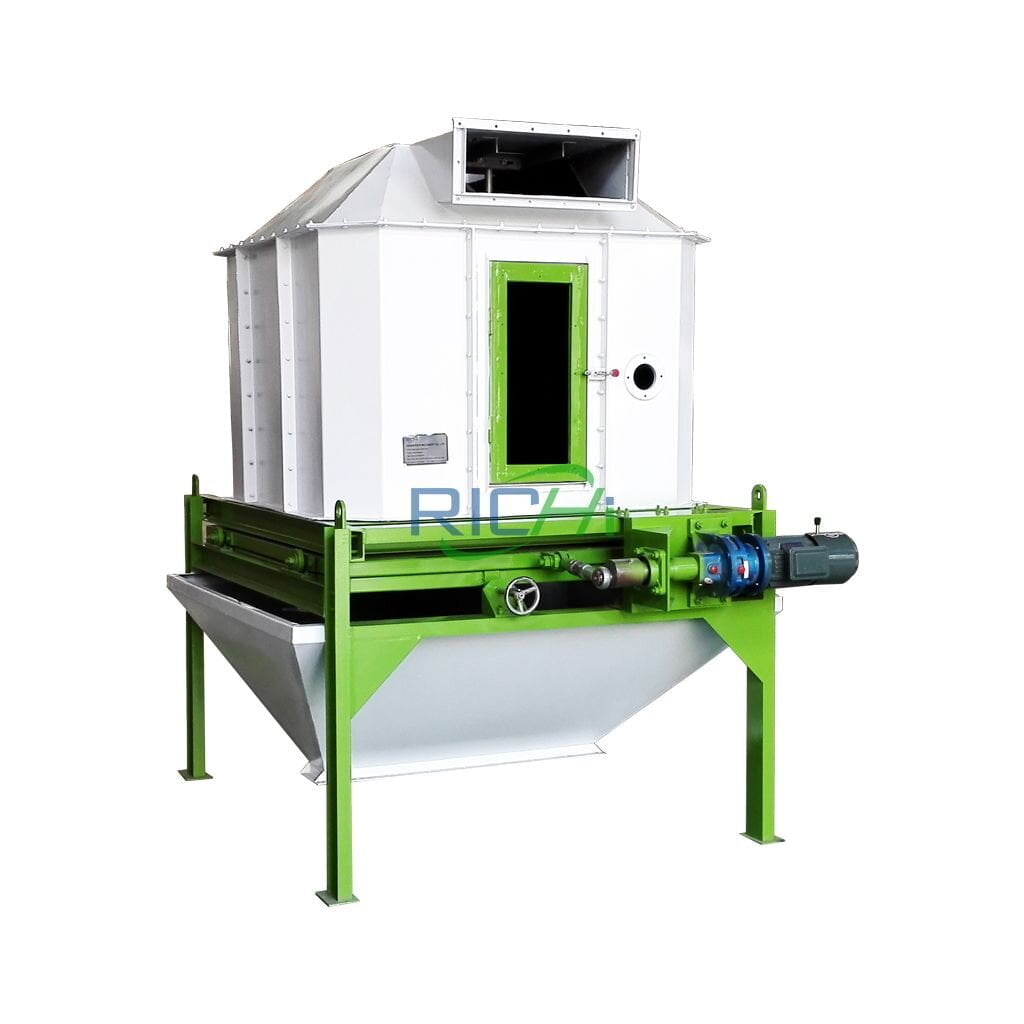
How to choose a pellet cooler?
Cooling system is to make the product after granulation maintain good storage performance, and it is an indispensable procedure in animal feed mill plant.
For a long time, the cooling after granulation is cross-flow cooling. Although it can meet the requirements of use and the temperature of the cooled granules is less than 7 °C, it will not meet the standard if it is not careful during operation.
The counter-flow cooler is a model with a more reasonable cooling principle, and its convection heat exchange system is the most complete and reasonable, so it has been rapidly popularized as soon as it appears. The cooling temperature of the pellet cooling machine can be lower than room temperature 3 ℃, the cooling effect is extremely ideal.
For the selection of the pellet cooler machine, since the models produced by each factory are similar, so only need to pay attention to the manufacturing quality, materials and accessories, such as:
- How the automatic control effect of the feeding and discharging linkage mechanism is, whether the main part is made of stainless steel, etc.;
- In terms of capacity selection, both large-scale models can be used, or two machines can be stacked to increase the output;
- The selection of fans and separators has a great relationship with the use effect, and the suction pipe should be made of stainless steel sheet, otherwise there will be water vapor. It has a great impact on the service life and should be paid attention to, otherwise it is impossible to obtain the most ideal use effect.

How to choose a pellet crumbler?
A feed pellet crumbler is a device that further processes the pellet size in animal feed mill plant.
At present, almost all crumblers use roller crumblers, and their performance is mainly evaluated by the rationality of the pellet crumbler machine structure, structural parameters, process parameters, and processing level. The roller diameter is large and the pressure is large, and it is easy to be broken.
There are two types of roller teeth, one is crossed helical teeth, the number of teeth in this combination should not be too much to reduce the powder yield; the second type is the combination of straight teeth and helical teeth, and the powder yield of this combination is also less , the two types of tooth arrangement can meet the requirements of use.
The powder extraction rate should be controlled within 3%. In actual use, it is very important to adjust the distance between the two rollers. Otherwise, if the distance between the two rollers is not equal, the product will be uneven.
Therefore, a watch gauge should be provided at the adjustment handwheel for easy operation. When selecting models, attention must also be paid to the size of the inlet of the pellet crumblers, which must be exactly the same as the outlet of the cooler, otherwise the powder output rate will be increased.
(If you want to process pellets above 2mm, you don’t need a pellet crumbler)
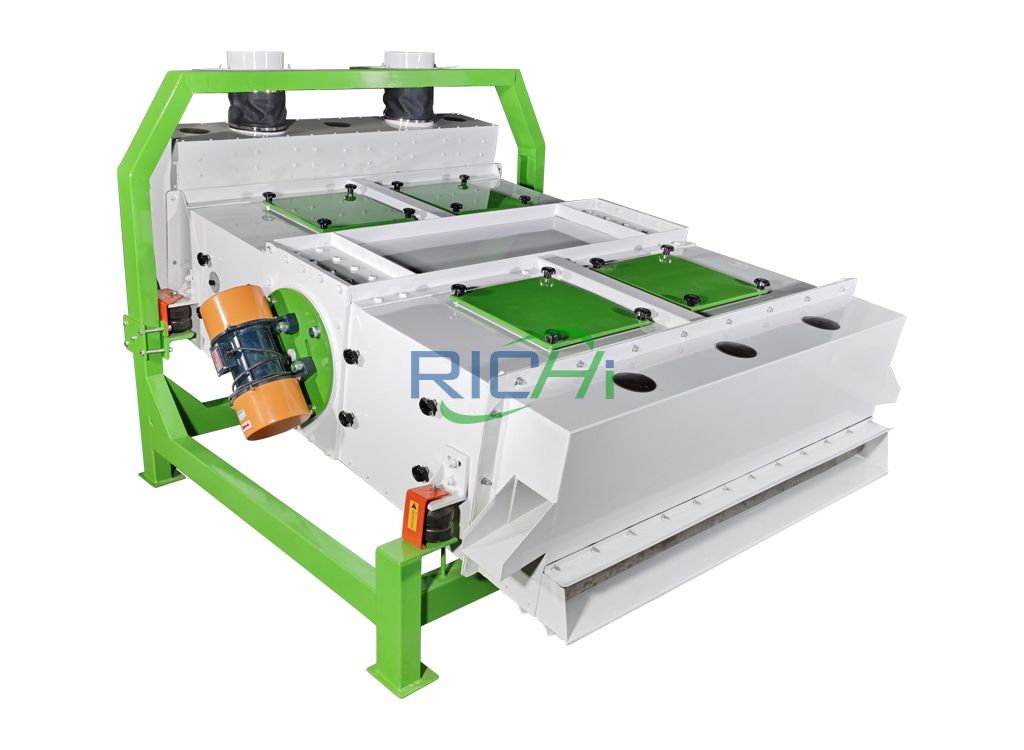
How to choose a grading sieve?
The grading screener used in animal feed mill plants mainly includes vibrating grading screen and rotary vibrating screen, both of which can achieve better results.
After crumbing, the material will be graded and screened to remove the powder part, so as to ensure that the material has pure small particles and achieve the best feeding effect.
The vibration grading screen should adjust the amplitude of the screen body according to the nature and flow of the material to achieve the best effect.
Rotary vibrating screen is one of the commonly used equipment because of the long distance between the screen surfaces, so the classification effect is better. In short, these two types of models can meet the requirements of use, and the classification efficiency can reach more than 98% to 99%.
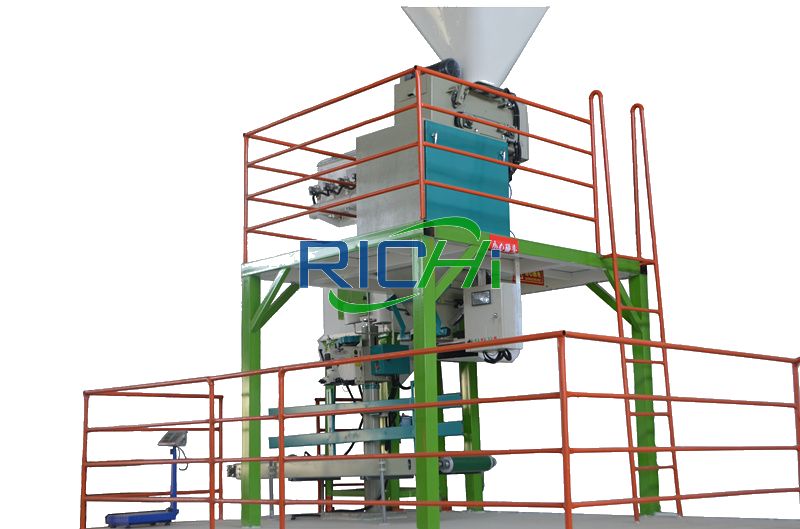
How to choose animal feed packaging machine?
It is recommended that animal feed mill plants who purchase packaging scales should choose products that comply with national product standards and metrological verification regulations wisely.
In the field that requires high measurement accuracy and fast packaging speed, consideration should be given to reducing the weighing range of the scale. For products with only one packaging specification, only one packaging scale with one weighing value can be selected.
For sites that require fast packaging, under the premise of meeting the contract requirements of both the supplier and the buyer, or meeting industry standards, consideration should be given to appropriately reducing the weighing accuracy and reducing the weighing range. For automatic bagging machines that require a wide weighing range, on the one hand, it can be considered to appropriately reduce the requirements of packaging speed and weighing accuracy, and on the other hand, manufacturers can be allowed to provide an animal feed bagging machine with different weighing accuracy in different weighing values.
In terms of safeguarding the interests of the buyer, in addition to filling in the various requirements for the animal feed packaging machine in the purchase contract, the buyer carefully looks at the content marked on the product nameplate when using the animal feed bagger. In addition, you should also carefully understand the variety of materials that the product is suitable for, weighing accuracy, weighing speed, weighing range, etc., and secondly, you should understand the range of working conditions, such as temperature, humidity, power supply and other indicators.
Doing a good job in the selection of core animal feed mill plant equipment can achieve twice the result with half the effort for a continuous production feed factory, which can effectively reduce equipment maintenance time and improve feed production efficiency.
In addition to the above core animal feed plant machinery, the animal feed plant also has some supporting equipment, such as scraper conveyor, bucket elevator, feeding auger, distributor, etc., because it has little impact on the quality of finished feed products, and most of them are general animal feed mill machine, not described in detail here. But please remember that Richi Machinery designs and manufactures all equipment, components for animal feed production plants, and you can always ask for a quote.
RICHI MACHINERY
RELATED ANIMAL FEED MILL PLANT CASES
The feed industry is the material basis for the development of modern animal husbandry and aquaculture, the link between planting, raising and adding organically, and the carrier of the coordinated development of agriculture, animal husbandry and fishery.
The feed industry leads the planting industry at one end, transforming a large amount of feed raw materials such as corn, soybean meal, cottonseed meal, and rapeseed meal every year; the other end is connected with the breeding industry, which promotes the growth of the output of meat, eggs, milk and aquatic products in various countries. With the continuous development of the economy, the feed industry has become a rising sun industry.


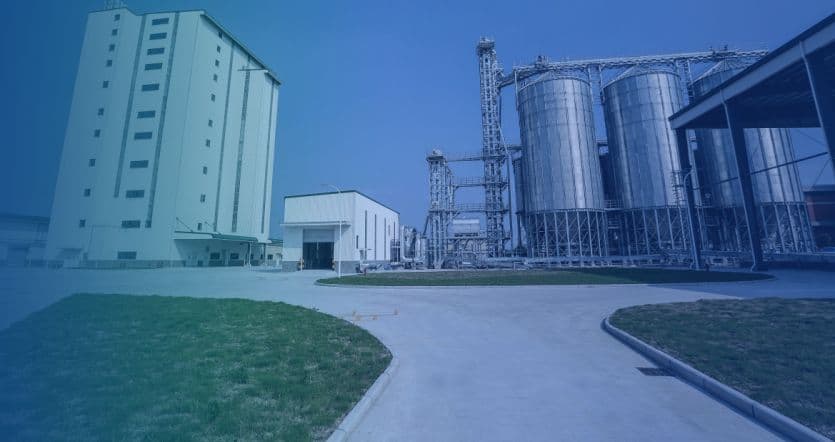

In order to meet the market demand, investors from many industries are entering the feed industry one after another. As an animal feed mill plant manufacturer with an excellent reputation, Richi Machinery formulates multiple sets of process plans for comparative analysis according to the actual needs of customers, selects a reasonable plan, and realizes private customization.
From animal feed plant machinery selection and program planning in the early stage, to the optimization and improvement of equipment production capacity in the mid-term, and then to the after-sales service in the later stage, we have professional project managers to track the whole animal feed manufacturing process to avoid risks and enhance the value of the animal food processing plant project for you.
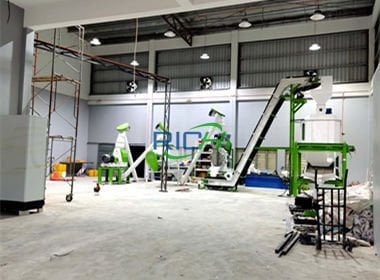
3-5 T/H Poultry feed mill plant In Malaysia
We customized the design of Malaysia 3-5 t/h broiler animal food processing plant according to the plant area, process requirements and local policies provided by the Malaysian customer, and preliminary civil construction preparations were carried out.

pellet machine for sale south africa
The South Africa customer comes from Samarkand, a key area of poultry farming. There are many poultry farms in the area, so the customer decided to invest in the 3-5 tons per hour poultry feed mill plant business for chicken broiler feed production.

40-42 T/H animal feed mill plant for Chicken
This is a new build animal feed mill plant project for poultry and livestock feed production, and the main construction content includes 7 production workshops, 2 office buildings, and 2 dormitory buildings. This is a turnkey animal feed manufacturing project.
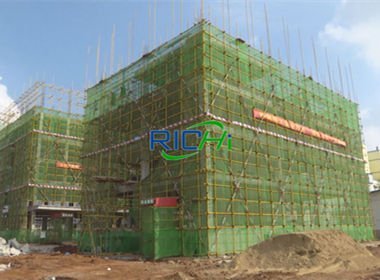
50T/H Livestock animal feed mill plant in china
This large scale new build 50t/h large livestock feed mill plant project covers an area of 60 acres, and introduces 3 modern technology livestock compound feed production lines and 2 raw material expansion production lines.

pellet mill for sale australia
The complete poultry feed manufacturing plant was purchased by a customer in Belgium who has a large scale poultry farm. The feed pellets produced by the 1-2 t/h poultry chicken feed pellet making plant is for his poultry farm and for sale.
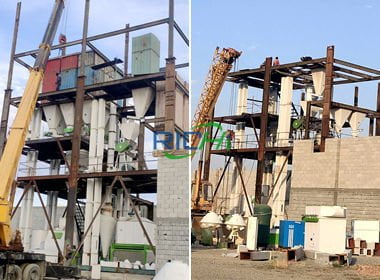
feed mill plant in Uzbekistan
This is a customized 10-15 tons per hour automatic animal feed mill factory, used to produce mash feed and 2-6mm chicken feed pellets, the raw materials are corn, wheat, soybean meal, sunflower seed meal, oil, premix. This project is built in 2019.

39-40T/H Chicken Feed Mill Plant in Kazakhstan
The 39-40t/h feed mill plant project mainly processes chicken pellets and chicken premix feed without fermentation process. After completion, the total annual production capacity is expected to reach 95,000 tons/year.

Afghanistan 10-15T/H Chicken Feed Mill Plant
This is a customized 10-15 t/h automatic feed plant project, used to produce powder feed for laying hens and 3.5mm chicken feed pellets for broilers, the chicken feed raw materials are corn, wheat, soybean meal, and other grain.
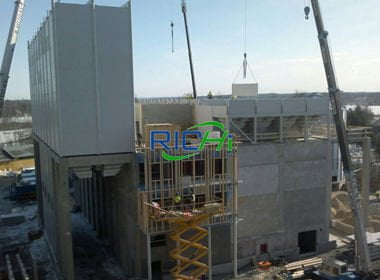
Algeria 10-15T/H Poultry Feed Mill Plant
The Algeria animal feed plant project, which includes 2 animal feed pellet production lines and 1440 tons of silos(4*350 tons), is one of the typical medium-sized poultry animal feed plant project in North Africa.

poultry feed manufacturing plant in Tanzania
This is the first time that the customer has entered the field of poultry feed processing and used this small automatic poultry feed mill project as an investment. How to make commercial poultry feed plant with small capacity? This Cape Verde project is a typical example.
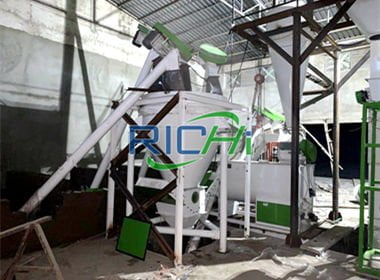
Ethiopia 5-6T/H animal feed mill plant
The Ethiopia 5-6 tons per hour chicken powder feed processing plant can produce powdered nutritious feed that meets different animal species. The main feed raw materials in this chicken poultry powder feed making plant are corn, wheat, soybean meal, and other grain.

feed production line in Thailand
This Thailand premix feed plant project was signed on May 28, 2020. This is the first time for the customer to enter the animal feed processing industry. The total area of the 10t/h poultry premix feed plant building is 600m², and the total construction area is about 1000m².

Customized Animal Feed Mill plant Project Report
In the past 30 years, we have accumulated rich practical experience, customized reasonable and practical animal feed mill plant configuration for thousands of customers, and provided a full set of services throughout the pre-sale, in-sale and after-sale. Our services run through all aspects of on-site topographical environment survey, production line process design, raw material testing, cost requirement analysis, project investment budget, equipment installation and commissioning, etc.
Next, I will share with you a few detailed animal feed mill plant cases, hoping to help you!
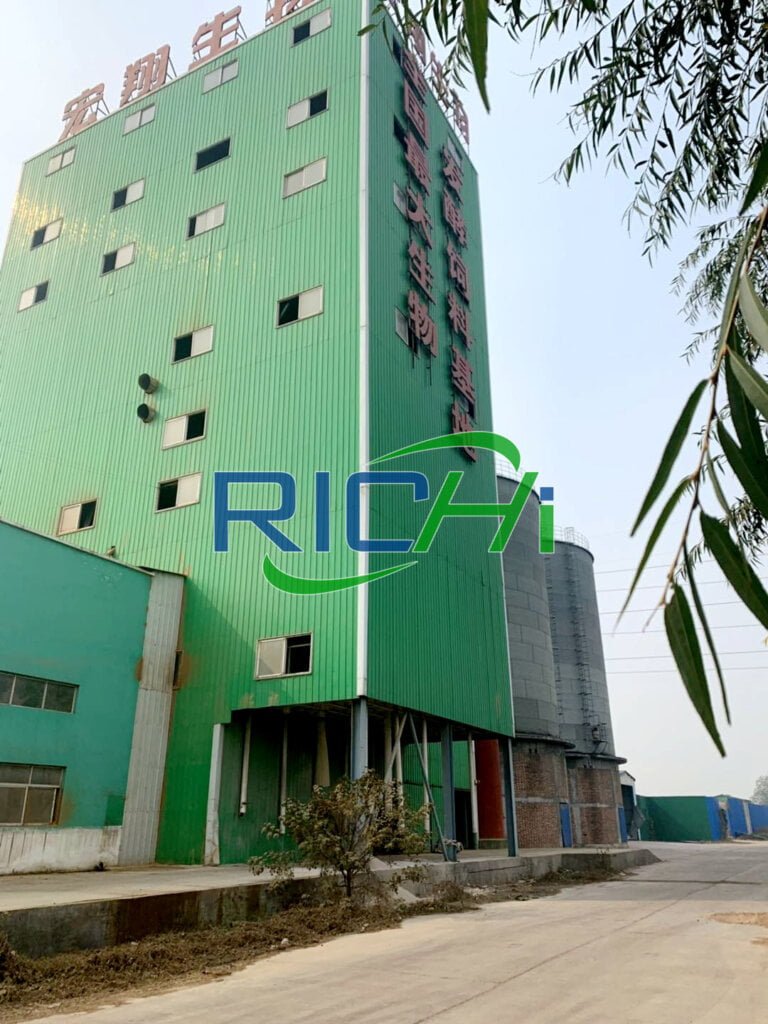
6T/H animal feed mill plant for livestock and poultry feed
The customer invested $400,000, used the leased land area of 5,165 m², and the factory building area of 2,592 m². This project implements an 8-hour production shift during the day, with an annual working day of 300 days.
The water consumption of this animal feed mill plant project is 2300t/a, of which the domestic water comes from tap water, the water consumption is 900t/a, and the boiler water is purchased pure water, and the water consumption is 1400t/a. The animal feed making plant converts LNG into CNG through a set of LNG gasification equipment, and then supplies gas to the gas boiler, and the annual consumption of natural gas is about 100,000 cubic meters. In addition, the total electricity consumption of the livestock and poultry feed mill plant project is about 500,000 kWh/a.
This 6t/h animal feed mill factory project is a feed processing and wharf project. The production workshop of this project is mainly for livestock and poultry feed with an annual output of 15,000 tons. The wharf is mainly a grain wharf provided by the enterprise, which is mainly used for loading and unloading corn. There is a 100t berth (equipped with a 5t crane), and the designed annual throughput capacity 40,000 tons, using a shoreline length of 43m.
Main engineering composition

6 t/h animal feed mill plant Process flow
01 Unpacking and feeding:
All kinds of raw materials used in the production of the 6t/h animal feed mill plant project are manually unpacked (corn does not need to be unpacked), and then put into the feeding port and measured by the silo, and then put into the feed mixer for mixing.
And soybean meal must be pulverized by an animal feed pulverizer before entering the silo. Considering the problem of uniform mixing of some additives in the subsequent process, it is generally pre-mixed by a mixer and then mixed with other materials.
02 Pulverizer crushing:
This 6t/h animal feed prodiction plant project adopts a single pulverization process to pulverize soybean meal and corn into raw materials of required particle size.
03 Bucket elevator transportation:
The corn and other powdery raw materials crushed by the feed hammer mill are respectively lifted by the elevator and then enter their respective silos, and are to be put into the mixer for mixing.
04 Mixing by animal feed mixer:
Each material in the silo is screwed to the batching scale bucket for measurement (using multiple bins and one scale for batching) and then put into the animal feed mixer, while soybean oil and various additives after premixing are put into the mixing machine separately.
The materials are mixed in a closed manner by means of a mixer. After being mixed by the mixer, the materials are lifted through the hopper and entered into the silo to be granulated.
05 Granulation process:
This 6t/h animal feed plant project adopts ring die granulation. The animal livestock poultry feed pellet making machine is mainly composed of feeding, stirring, granulating, transmission and lubrication systems.
06 Cooling process:
Due to the introduction of high temperature and high humidity steam during the granulation process and the extrusion of the material to generate a lot of heat, the temperature of the pelleted feed can reach 75-85 °C and the humidity can reach 16- 18%.
Under this condition, the pellet feed is easy to deform and break, and the phenomenon of sticking and mildew will also occur during storage. The moisture must be reduced to below 14%, and the temperature of the material should be reduced to below 8°C higher than the air temperature, so it needs to be cooled.
07 Screening process:
The customer requires the finished feed to be neat and uniform in size. Therefore, the unqualified products need to be screened before packaging to remove the unqualified feed. After screening, the unqualified feed are returned to the previous process.
08 Measured discharge/sewn package:
Qualified feed are discharged and packaged after being measured by a quantitative scale.

Main Equipment of the 6T/H animal feed mill plant
Main Raw And Auxiliary Materials And Energy Consumption
Focus on successful cases in more than 130 countries and regions around the world, and inspect every process from a single machine to the entire animal feed production line.

1.5-2T/H Animal feed mill Plant for pig feed
The animal feed production plant project covers an area of 2700m², with a total construction area of about 3500m², including 1 production workshop, 1 boiler room, 2 raw material warehouses, 1 finished product warehouse, 1 office building and ancillary facilities. The pig feed factory project is mainly engaged in the production and processing of pig feed, with an annual output of 10,000 tons of pig feed after it is completed and put into production. The animal feed processing project takes 2 months from civil construction to production. The animal feed manufacturing plant cost is about 50000-120000USD.
This animal feed production project has a fixed workforce of 10 people, no board and lodging, three shifts, 8 hours per shift, 250 days of work per year.
We design comprehensive problem solutions for the 6t/h livestock and poultry feed mill plant engineering according to different requirements of customers, different raw materials, and different sites. Our professionals go deep into the construction site and do a good job of planning.
Main construction contents
Process flow of the 1.5-2T/H Animal feed mill Plant for pig feed
01 Receive and clean up:
Corn Received: Pour the purchased corn into the grid screen, send it to the cleaning screen through the scraper conveyor, clean out the soft impurities such as large particles of impurities, strings, stones and clods in the raw materials, and then send it through the bucket elevator, stored in a silo.
Soybean Meal/Bran Receipt: The soybean meal/bran purchased from outside the animal feed mill plant is introduced into the grid screen, and sent to the cylinder primary cleaning screen through the scraper conveyor, and the large particles of impurities and soft impurities such as twine in the soybean meal are cleaned out, and then sent through the bucket elevator, to the soybean meal steel silo for storage.
02 Crushing system:
The corn and soybean meal temporarily stored in the animal feed silo to be powdered are sent to the feed pulverizer for pulverization. The pulverization process is fully enclosed.
The pulverized material enters the dust settling chamber, and the material is sent through the material sealing screw conveyor and bucket elevator, temporarily store in the ingredient warehouse.
The dust settling chamber of the feed pulverizer is provided with a ventilation port, the main function is to balance the air pressure in the settling chamber, and a dust collector is provided at the ventilation port.
03 Mixing ingredients:
The powdery raw materials temporarily stored in the batching silo are measured by the material level device, and the ingredients are batched according to the product requirements.
The measured materials are sent to the discharge machine through the material sealing screw conveyor, and mixed by the animal feed mixer equipment and the double-shaft high-efficiency mixer.
After fully mixing, it enters the buffer hopper, and the scraper conveyor sends a part of the material to the packaging system, and the other part of the material is sent to the granulation section.
04 Conditioning and granulating:
The mixed powder feed is sent to the conditioner, and the fibers in the feed can be softened by adding steam to improve the granulation effect. A residence time of more than 30 to 40 s is required in the quality chamber. The conditioned material enters the animal feed pellet mill to press out pellet feed.
05 Cooling and screening:
The granular feed produced in the granulator is cooled by the cooling air net, and then sorted by rotary grading and sieving. In the pellet crumbler, the long pellets are broken to meet the product specifications, and the separated powder is sent back to the reprocessing section for re-granulation.
06 Packing system:
The powder feed in the mixing section and the pellet feed in the pelletizing section are sent to the finished product warehouse, and the products are poured into the woven bag through the animal feed bagging machine. (Maybe you want to start a Floating Fish Feed Plant)
Main Equipment Needed in The 1.5-2T/H Animal feed mill Plant for pig feed
main raw and auxiliary materials
Public measures
- Boiler water: The 1.5-2t/h animal feed production project is equipped with a 1t/h steam boiler with a water consumption of 240m³/a (8m³/d), and the boiler water discharge is calculated as 5% of the maximum steam volume, then the boiler water discharge is 12m³/a.
- Power supply: Supplied from the local municipal grid.
- Heating and cooling: The production of the animal feed processing line project uses a 1t/h gas-fired steam boiler for heating, with an annual operation of 450h. Based on full-load operation, the annual steam output is about 450t, and the annual natural gas consumption is about 34,000 m³, which is supplied by the municipal natural gas pipeline network. Air conditioning is used for office heating and cooling.

Richi Machinery can accurately control cost accounting, scientifically calculate expected profits, reduce costs and increase efficiency, and profits can be expected. The operating profit ratio of thousands of customers is clear and testable, and they jointly test the entire service system from the feed mill plant design and development team to the installation and maintenance team, and witness the realization of the investment value of the entire animal food processing plant project.

Animal feed plant for 16 t/h compound feed & 4 t/h concentrated feed
This combined animal feed processing plant belongs to the reconstruction and expansion project, the poultry cattle feed manufacturing plant cost is 450,000 USD; it covers an area of 400m² and is reconstructed and expanded on the basis of the existing project. The purchased corn, bran, soybean meal, and corn germ are used as raw materials. -In the processes of pelletizing-cooling-packaging, the new feed output was 130,000 t/a. There are 14 new laborers in the animal feed mill plant, regular day shifts, 8 hours per shift, 295 days of work per year.
Main construction content:
The feed mill plant project relies on the existing factory buildings. The main contents of the animal feed production line project during the construction period are equipment installation and commissioning. The construction period is 2 months, the time is short, and the content is relatively simple.
The workshop is equipped with feed mixers, feed pulverizers, air compressors, cooling towers and other equipment. Add mixers, pulverizers, air compressors, cooling towers, etc. to the existing production workshop. That is, adding a feed processing line in the original workshop.
Product solutions
Main economic and technical indicators of 16 t/h compound feed & 4 t/h concentrated feed Mill Plant
feed Production Process flow
01 Animal feed manufacturing process of 16 t/h compound feed
- ① Raw materials: corn and soybean meal are fed from the warehouse to the hopper, and feeding dust is generated during the feeding process.
- ②Initial cleaning: This section includes the workshop feeding port elevator, initial cleaning screen, permanent magnet drum and other animal feed mill plant equipment. The raw materials are sent to the distributor by the feeding pit conveyor, etc., and then the large impurities, sand and iron lumps are removed by the initial cleaning screen, the permanent magnet cylinder, etc. The raw materials after the initial cleaning enter the silo to be crushed, and are ready to enter the next process.
- ③Pulverization: In this process, the material enters the pulverizer through the buffer hopper, and the material is pulverized into the particle size required by the process. The pulverized material enters the batching bin from the elevator and waits to enter the next animal feed manufacturing process.
- ④Measuring, batching and mixing: The crushed raw materials and the initially cleaned powder are controlled by the computer in the central control room, weighed and unloaded according to the proportion, enter the buffer hopper, and enter the animal feed mixer machine from the buffer hopper for mixing.
- The adding port is directly added, and the vegetable oil is sprayed through the grease adder. After mixing in the mixer for about 90s, it is lifted to the granulation bin to prepare for granulation.
- ⑤Granulation: The mixed material is conditioned and then granulated and formed (dry saturated steam, 70℃~90℃, 0.98MPa) to achieve starch ripening and kill some bacteria, which is beneficial to animal digestion and absorption.
- The mixed material enters the granulation bin, and then enters the animal feed pellet granulator. According to the required size of the feed pellets, it is processed into the finished feed products of different specifications by the high-grade animal feed pellet making machine.
- ⑥Measuring packaging: The finished product after granulation first enters the pellet cooler, passes through the countercurrent cooler, reduces the temperature and moisture of the finished product, and enters the animal feed bagging machine for packaging.

02 Animal feed manufacturing process of 4 t/h concentrated feed production
- ① Raw materials: Feed raw materials are fed into the hopper, and feeding dust is generated during the feeding process.
- ②Initial cleaning: This section includes the workshop feeding port elevator, initial cleaning screen, permanent magnet drum and other equipment. The raw materials are sent to the distributor by the feeding pit conveyor, etc., and then the large impurities, sand and iron lumps are removed by the initial cleaning screen, the permanent magnet cylinder, etc. The raw materials after the initial cleaning enter the silo to be crushed, and are ready to enter the next process.
- ③Pulverization: In this process, the material enters the animal feed mill plant pulverizer machine through the buffer hopper, and the material is pulverized into the particle size required by the process. The pulverized material enters the batching bin from the elevator and waits to enter the next process.
- ④Measuring, batching and mixing: The crushed raw materials and the initially cleaned powder are controlled by the computer in the central control room, weighed and unloaded according to the proportion, enter the buffer hopper, and enter the animal feed mill plant mixer from the buffer hopper for mixing. The adding port is directly added, and the vegetable oil is sprayed through the grease adder. After mixing in the mixer for about 90s, it is lifted to the granulation bin to prepare for granulation by animal feed pellet mill.
- ⑤Measuring and packaging: the mixed material is the concentrated material. After entering the finished product warehouse, the packaging equipment is used for animal feed packaging.
Main animal feed plant machinery

Main raw and auxiliary materials and product solutions
General layout Of animal feed mill plant
The expansion animal feed production plant project area is located on the southwest side of the raw material warehouse, covering an area of 400m². From west to east, there are dust collectors, pulverizers, elevators, and air compressor rooms on the north side of the interior. The cooling tower is on the south side of the dust collector, the feed granulator is on the second shelf above the cooling tower, and the mixer is on the east side of the cooling tower. The northwest side of the finished product warehouse is the packing area, which is equipped with sewing machines and palletizers.
The layout of the animal feed mill plant project is arranged in accordance with the production process, the functional division is clear, the process is smooth, and the layout is compact; the flow of people and goods is smooth, and the characteristics of the engineering industry, safety distance, cargo transportation and fire protection needs are fully considered. safe distance to avoid mutual influence.
The general layout of this animal food processing plant project is good enough to satisfy the smoothness of the process flow, which reflects the convenience of material transportation, simplifies the transportation of materials, and facilitates production.


ABOUT US
Founded in 1995, Richi Machinery has been developing steadily and steadily in the field of pellet production. It is mainly engaged in the R&D and manufacturing of equipment required for industry projects such as feed, biomass energy, and organic fertilizer. It has gradually formed a complete R&D, production, sales and service system, provide technical solutions and supporting products. In the past 30 years of innovation and development, it has become an enterprise with both hardware and software strengths in China’s domestic pellet machinery industry. The leading products cover more than 80 types of 3 major industrial modules: feed mill equipment, biomass pellet plant, and fertilizer granulation equipment.





